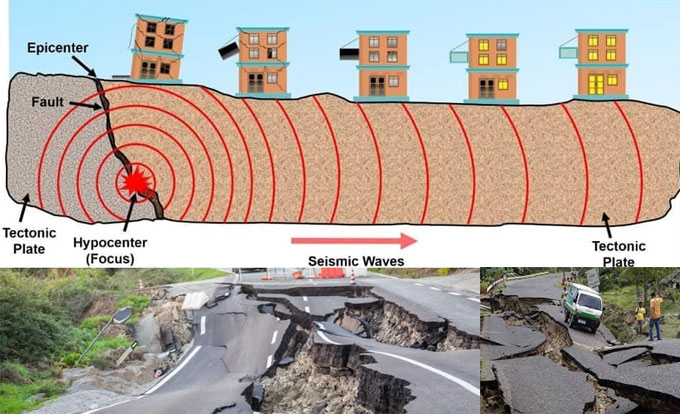
Nature of Ground Movement Due to Earthquakes
Earthquakes are terrible natural disasters that occur due to movements in the tectonic plates. The ground moves due to the earthquakes. Since earthquakes can be gentle to violent, the ground movement can be marginal to devastating as a result. This moves the building vertically and horizontally, both of which creates considerable strain on the structure.
Of course, the exact magnitude of the shaking and shifting that a building experiences depends upon how far it is from the epicenter the the quake. Earthquakes create seismic waves that carry through the ground, and they weaken in power as they traverse the distance, finally getting completely absorbed.
The seismic waves travel faster through hard rock and slower through soft soil. However, when it transits from rock to soil, the strength of the wave increases. So, it really doesn?t matter whether you are on soft ground or hard - you will still be hit with considerable power, if you?re close to the center.
Understanding the nature of the waves generally occurring in a location gives rise to plans of how to combat it properly. This gives us knowledge and ways to construct a building properly so that common earthquakes cannot topple it.
There are different types of seismic waves, and they impact a structure differently. In general, they are broadly categorized into two seperate groups - body waves and surface waves.
1. Surface Waves: These types of waves travel on the surface of the planet, not under ground. They are of the following two types - Rayleigh and Love waves.
a) Rayleigh Waves: These waves travel slowly along the surface, creating waves parallel to each other. Therefore the movement in this wave is vertical only. They cause the most shaking of the ground.
b) Love Waves: These feel more like a vibration than tumbling. This is because Love waves travel very fast and the movement they cause is horizontal to the ground. Most of the time, they are felt at the beginning of an earthquake.
2. Body Waves: When a seismic wave travels through the underground layers of soil and rock rather than surfacing, they are called Body Waves. They can be primary or secondary types (P-waves and S-waves).
a) P-Waves: P-waves are even faster than Love waves, being the fastest. They compress and expand the rock around the path they travel. Which may cause other disturbances.
b) S-Waves: Slower than P-waves, but still fast enough, these travel later and they are felt later on, often causing the aftershakes. It does not travel through liquids. However, these waves are quite large in magnitude and can cause large-scale damages.
The Love waves and S-waves combined together causes the most amount of damage. When together, they affect both vertical and horizontal movement on a building. Thus causing the maximum displacement and forces along all axes.
One good thing is that body waves get reflected from the surface as they reach ground level. This alleviates much of the shaking. Still, shaking at the surface of the planet is much higher than the shaking underground, about twice. This is because the structure at ground level experiences much more acceleration than underground points. Also, below ground, there is no free swey of the structure however tall it may be. This gives us quite an incentive to build underground structures in seismically active regions.


